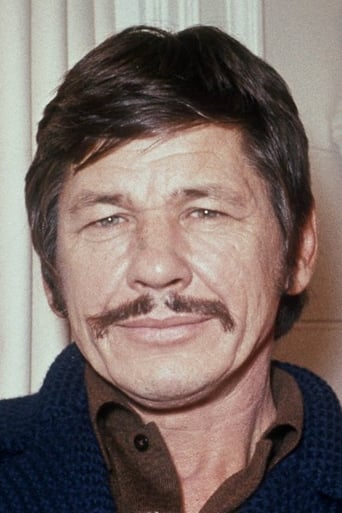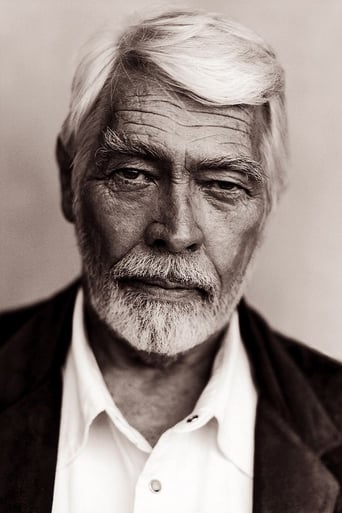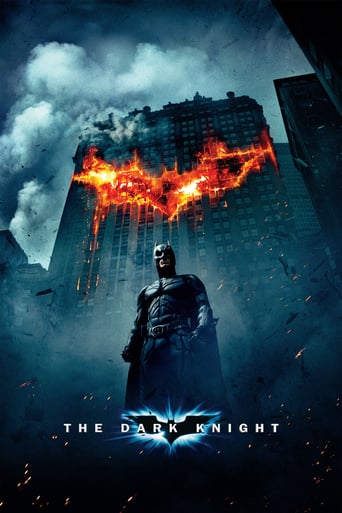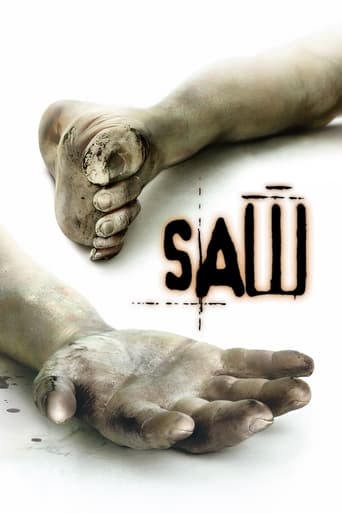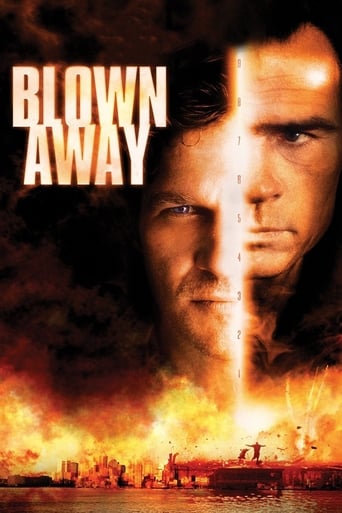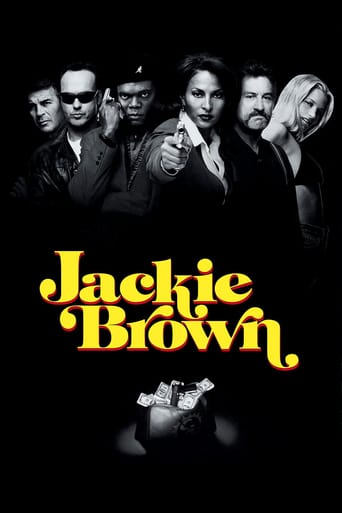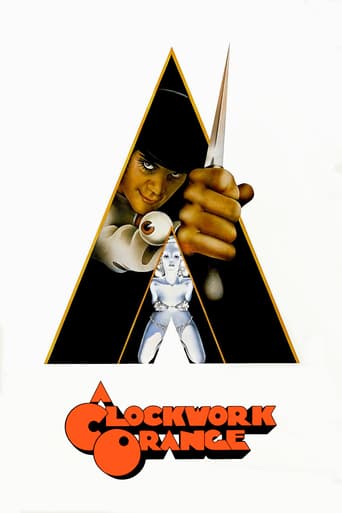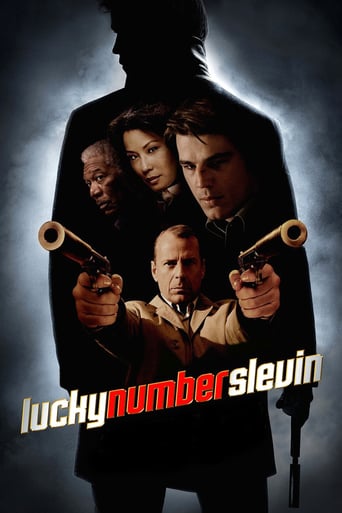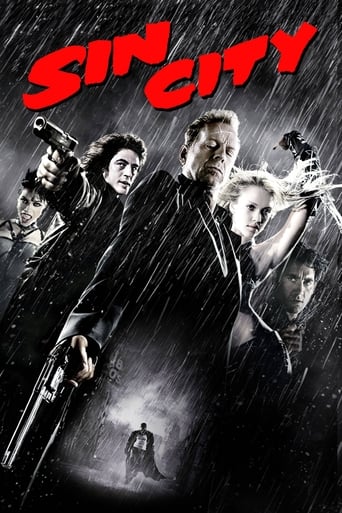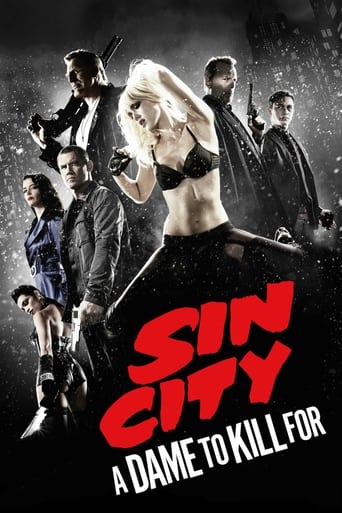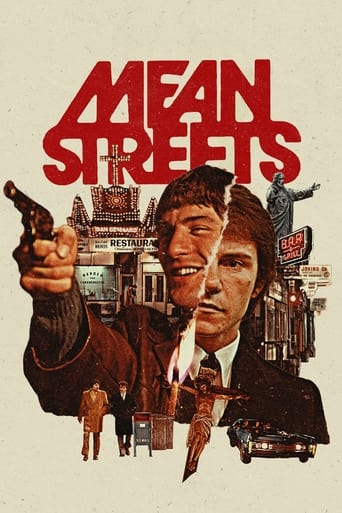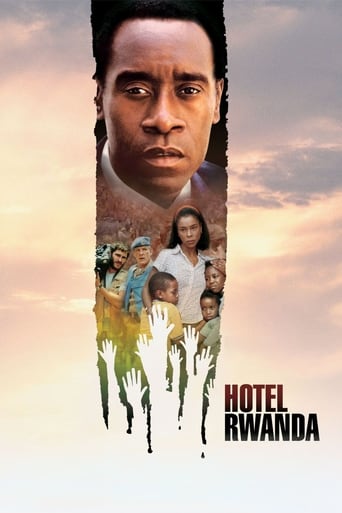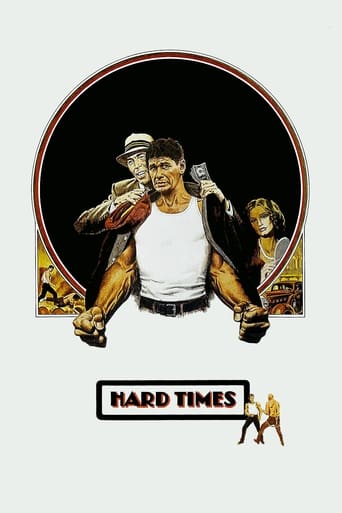
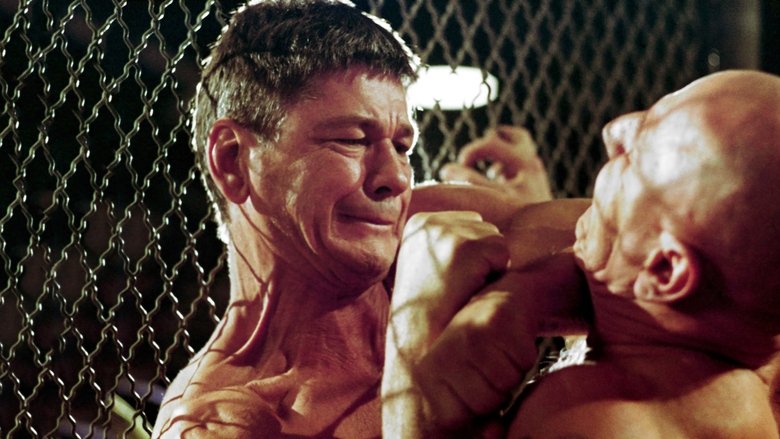
Hard Times (1975)
In the depression, Chaney, a strong silent streetfighter, joins with Speed, a promoter of no-holds-barred street boxing bouts. They go to New Orleans where Speed borrows money to set up fights for Chaney, but Speed gambles away any winnings.
Watch Trailer
Cast


Similar titles
Reviews
Charles Bronson was known for his tough guy roles. The strong man of few words who knows what he wants. I can't say I saw a lot of movies with Bronson in them, but this one I remember ever since I first saw it back in 1975. Recently I watched it again.A drifter, Chaney (Charles Bronson), arrives from out of nowhere riding a freight car in the deep South during one of the most trying and difficult periods the US has ever experienced: the Great Depression of the 1930s. Times were hard during the Great Depression. Very hard. Over 25% of the workforce of the United States was out of work in 1933. Many people were barely scraping by. And despite all of Roosevelt's maneuvering and trying out new schemes to get America back to work again, the only thing that truly ended the Great Depression was when America went on a war economy during World War II.We know nothing about Chaney's history nor why he went South, but he's down on his last few dollars and needs to build up a reserve again. He makes it clear several times during the movie that when he's built up his reserve, he's moving on.Chaney jumps off the train around New Orleans and hooks up with a petty promoter Speed (James Coburn) who starts promoting him as a streetfighter who can take on the best. There are some well-done fight scenes where Chaney shows his stuff. Not only that, he can shoot a pistol straight and accurate. It's fully plausible that Cheney had fought in World War I and had learned his shooting skills while in the Army. This however is a speculation on my part.Chaney begins courting Lucy (Jill Ireland--Bronson's wife at the time). They begin a relationship but she wants what most women want, a man who has a secure future and with whom she can settle down. Chaney, true to his wandering nature, realizes this would never work for him. At the same time he needs to make one more killing in the fight business before he can move on. He helps Speed out of a jam Speed has gotten himself into by showing up to fight a professional streetfighter brought down specifically from Chicago to fight him. At the end Cheney catches another train out of New Orleans and leaves with a fat new reserve. Speed admiringly watches Cheney as he walks away from the car towards the train and mutters to himself, "He was sure something." A wandering nomad as inscrutable as when he arrived.The movie evokes the era quite well. The acting and directing are good. This movie along with Death Hunt (1981) are IMO Bronson's best and most memorable movies with Death Wish (1974) a plausible third. He fit into all of these as naturally as a glove fits a hand.10/10. If Hollywood made more movies like this (no CGI but just plain good acting, directing, and story line) and less pure crap, I'd see more mall movies. Unfortunately movies like Hard Times just don't exist anymore.
'Boxing pictures' is one of the most popular genres in American cinema. This genre aims to depict class and the tensions arising as a result of the boxer's desire for individual glory and the wider socio-economic forces that shape the fighter's identity. Hard Times has achieved a unique position in the realm of this genre for its effective use of a popular sport to depict tough times in American history and their impact on ordinary people. For his début film, director Walter Hill chose to delineate hardships faced by ordinary people in Louisiana during the Great depression. It was during such depressing times that men were instantly hooked to boxing which provided necessary thrills aimed at entertaining a public which had means to pay for bare knuckle fights. Although it can be said that actor Charles Bronson carried the film on his shoulders, there are some good performances by James Coburn too. Watching their team succeed, one is led to believe that a man has to use his hands as effectively as his mind. One thing which can bother some viewers especially the weaker gender as there are some absolutely negligible roles for women.
It's the Great Depression in New Orleans. Bronson arrives on a freight train with six dollars. Coburn discovers that Bronson has a punch that would penetrate 20 millimeters of steel and they make a lot of cash together participating in pick up fights, sustained only by bets.The fights are brutal. Two shirtless men batter each other until one is insensible. Anything goes in these mano a mano and pata a pata. It's all bare-knuckled fighting, as in a grade-school playground. You can kick an opponent, pull his hair, strangle him, break his back, knee him in the jewels, or ram his head against the wall.Strother Martin is always there as the dope-addicted ex medical student to treat your wounds and bandage you up. But this is Hollywood, not New Orleans in 1935. There's hardly a drop of blood. These guys are real savages, remorseless, and the worst Bronson winds up with is a rather becoming bruise on his temple -- and that only after the climactic fight against the best bare-knuckle fighter in the country, imported, like the gunslinger in "Shane", from elsewhere.If the settings weren't drab enough, with their greenish walls and peeling chintz wallpaper, and the overhead fan that doesn't work, and the spare and spindly furniture, a very portrait of the abandoned railway car I live in, the fights themselves are depressing. As a nation we seem to be turning into a society of cage fighters and air guitar contests. That's for the American man. The American woman can go on afternoon television and sob out her story of sexual abuse as a child. And of course we can all sit back and enjoy American Idol. Man, does our system of values need the services of the failed medical student, Strother Martin. Does he know anything about treating blood poisoning? It isn't the exercise of physical skill that's repulsive. I envy athletes and dancers for being able to do with their bodies things that I could never command mine to do. Jill Ireland, Bronson's whorish sometimes girl friend in the movie, was trained as a ballerina and I admire her for it.It's the objective of the writers and producers that are so repugnant. They're playing to an audience that simply wants to see two behemoths batter each other to the ground. That's the ENTERTAINMENT. It's as if some group of MBAs at Columbia Pictures got together and had a bright idea. Instead of having a story of good and evil with a sprinkling of fist fights, why not make the whole movie about fist fights? The fights themselves follow all the conventions. Bronson's opponents rarely connect. Their round house punches miss by a mile with a great whoosh, while Bronson almost always connects with a sound of braking pottery.If it weren't for that pandering, the movie might be pretty good. Bronson hardly has any lines. He's silent and wears an inscrutable smile. But some of the secondary characters are interesting. Coburn's facial features have never been more mobile. Jill Ireland is appealingly winsome. And there aren't any real villains. The organization that provides Bronson with opponents are men of their word, in a way that Coburn, for instance, isn't. (He recklessly gambles away the debt he owes them.) The period detail has a few anachronisms but is convincing enough, as is the wardrobe. And the ending isn't what the formula demands. Ireland finds another man, more dependable than Bronson, and hooks up with him. And Bronson, who drifted into town in a box car, drifts away into the night.
Both Charles Bronson and Clint Eastwood played during the Seventies bare knuckle prize fighters. But Charles Bronson in Hard Times was infinitely more serious about it whereas Clint's two films Every Which Way But Loose and Any Which Way You Can were played strictly for laughs.Hard Times is set during the Great Depression and in those desperate economic straights people would do just about anything for a little cash. Bronson who grew up in that period actually did do some legitimate prize fighting at one time which is why he looks so natural in the role. With the possible exception of Robert Mitchum, I don't know any other major male film star who came from such a hardscrabble background as Charles Bronson. James Coburn is his co-star and the two veterans from The Magnificent Seven and The Great Escape play beautifully off against each other. Coburn is a gambler/manager. Coburn likes to live life to the fullest and on the edge which exasperates his girl friend Margaret Blye. It's Bronson who approaches Coburn, but it's Coburn with his reckless ways that nearly lands both of them in the toilet with other gamblers and loan sharks. Chief villain of them is Michael McGuire playing Chick Gandil.An interesting choice of name for a villain because Chick Gandil was the ringleader of the infamous Black Sox who threw the 1919 World Series. I did a little research on Gandil and there was no mention of him being involved in the illegal bare knuckle prize fight game. Wikipedia does mention that Gandil did do some boxing before deciding on baseball as a career. At the time of these bare knuckle fights, the real Chick Gandil was involved in some outlaw semi-pro baseball leagues along with other banned players. And he was from California not New Orleans where this film is set. McGuire however is every inch the rogue Gandil was alleged to be.Strother Martin gives a good account of himself as a would be doctor who got thrown out of medical school for opium addiction. As it was called back then, Martin was a hop head. He plays the corner man for Bronson.Hard Times is a nice and occasionally brutal look at how some had to make a living during the Great Depression. A really worthwhile film capturing the era and some of the men who survived it.


